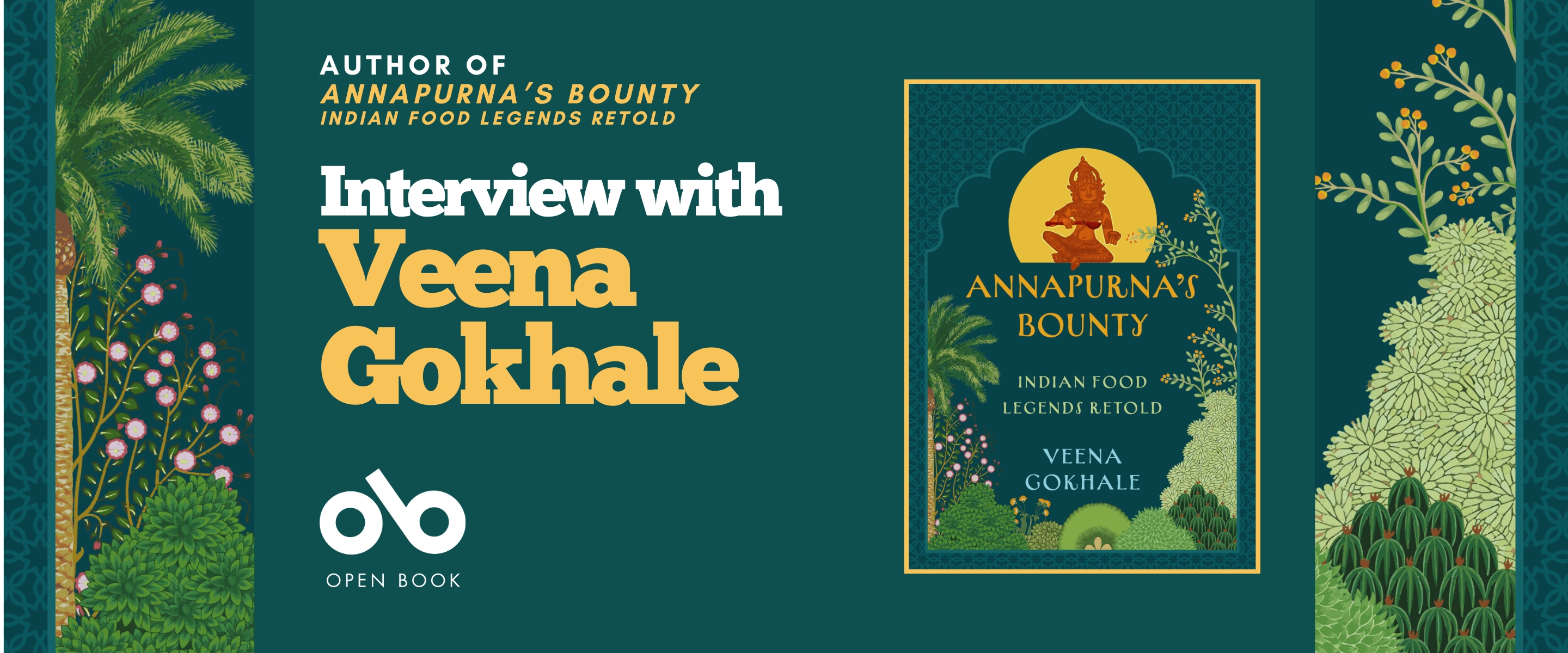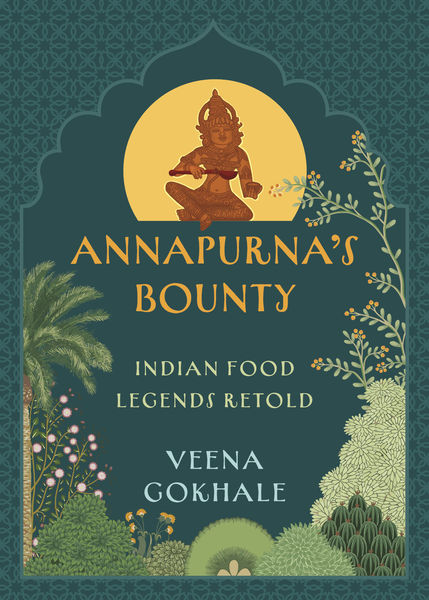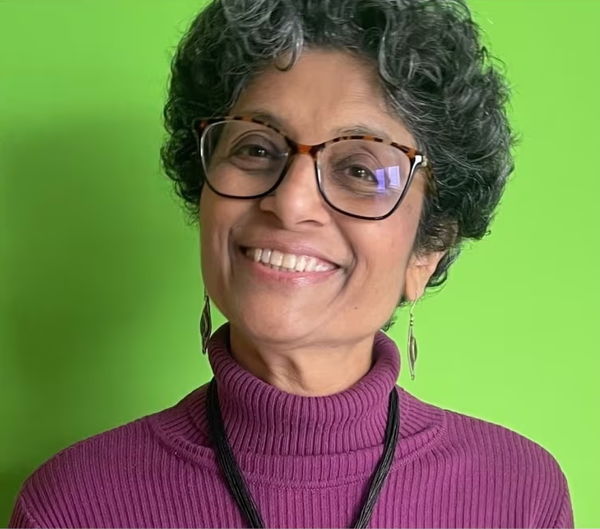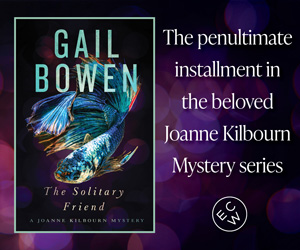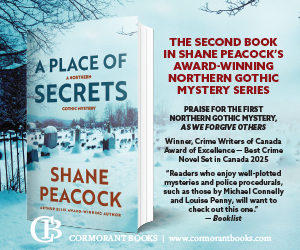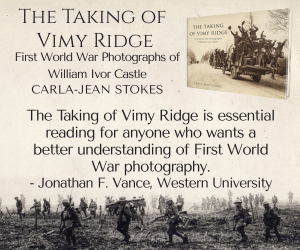Veena Gokhale Weaves Indian Food Legends into Vibrant Short Stories in Annapurna's Bounty
Storytelling runs through everything that culture carries, from literature to performance arts to traditional ways of making food. So it's certain that Veena Gokhale"s new collection of short fiction will resonate with readers of Indian heritage, and those who admire Indian cuisine.
In Annapurna's Bounty: Indian Food Legends Retold (Dundurn Press), the author anchors their new work with the titular Goddess of Nourishment, who presides over these rich collected stories. The characters within experience this in a variety of ways, whether these manifestations are benevolent or contentious. This includes kings and commoners, witches and goddesses, gurus and bandits, and refugees and travellers.
Each story is capped off by a vegetarian recipe offered up by these characters, coming from the four corners of India, and they take shape as nourishing dishes that will be familiar to many, or in new twists on these beloved foods.
We're thrilled to feature this unique and thoughtfully woven tapestry of Indian food legends today on Open Book, and to share an interview with the author.
Open Book:
What do the stories have in common? Do you see a link between them, either structurally or thematically?
Veena Gokhale:
Yes, there is a theme! Thank god! I find the publishing industry, including literary journals, rather obsessed with coherence, which I find strange, and frustrating. The human world is very messy, and literature reflects and refracts this universe in multiple ways. A crazy, chaotic world streamlined into thematic story collections, as well as theme-based literary journal issues, does not make sense to me.
Anyhow, my short story collection is a contemporary retelling of Indian food legends. In Annapurna’s Bounty, food manifests as a ploy, bargain, symbolic communication, a bone of contention, a lesson, etc.
Structurally, though, the stories are quite different. One story is a first-person narrative and two of the ten stories come into the present day. I also like to break the fourth wall, i.e., not just stay in the story world I’ve created, but step out of it, a bit, in some of the stories.
Another linking factor is that there is one recipe per story. The recipe is related to the story in one way or another. For example, a recipe may feature a food ingredient that is important in the story or even feature a dish that appears in the story. As an example, one story is about a British chef called William who is stationed at a British army regiment in India during WWI. The recipe at the end of that story is an Indo-British or Anglo-Indian soup called Mulligatawny. The way I saw it, a character in each story offers a recipe to the reader!
OB:
Do you think your characters have anything in common with each other, from story to story?
Your CanLit News
Subscribe to Open Book’s newsletter to get local book events, literary content, writing tips, and more in your inbox
VG:
There’s a real range -- kings and commoners, witches and goddesses, gurus and bandits, refugees and travellers. So the characters come from different social classes, and religious and cultural backgrounds, as well as historical periods, but most have one thing in common. They are moral, upright humans, with two notable exceptions. One is Sanbusak (San), the proverbial samosa, and the other is the Captain of the aforementioned British army regiment in India.
Overall, the classic storytelling technique of putting sympathetic characters in challenging situations works, as the reader wants to find out what happens next, hoping that things turn out well for the protagonist. And since short stories are, well, short, this is not a bad way to go. The characters are in all kinds of settings too, from a village on the Khorasan plateau in ancient Persia, to a boat caught in a storm between Persia and India, to a Hindu heaven where Indra, the King of the gods lives, to palaces and gardens, and so on.
I must say that I really enjoyed writing San, who is a self-centered and manipulative. And he does not change. This idea of characters changing is more common to novels, less to short stories. And perhaps this idea no longer holds in contemporary fiction? In any case, I wanted to make the point that some folks, feckless though they may be, do not change. The British Captain is truly villainous and condemnable, so he’s more the classic antagonist, anti-hero type.
OB:
Did you do any specific research for any of your stories? Tell us a bit about that process.
VG:
Almost all the stories involved some cultural or historical research, including even just finding the food legends. I wanted the book to very deliberately reflect India’s religious pluralism. I believe deeply in pluralism and diversity. I particularly wanted to highlight it as India is sadly in the grip of Hindu fundamentalism right now.
The characters are Hindu, Sikh, Jain, Buddhist, animist and Zoroastrian. Characters also come from different Hindu castes. While Islam is not directly represented, as, alas, I did not find a compelling enough Muslim food legend, there is a story involving Akbar, the great Moghul Emperor, born Muslim, who is almost certainly the most open-minded monarch that ever existed. He even created a new religion!
I did my research on good ole google! One thing I found, and I was not surprised, is that some legends had different versions. When researching the story of the Zoroastrian flight to Hind aka India, which was anywhere between the 8th to 10th century, and may have encompassed that entire period, there was a lack of concrete details about day-to-day life whether in Persia or Hind. Hence I chose to write that story in the first person, focusing more on the characters and using rather generic descriptions of place.
I enjoyed the research for sure, but I do not aim for historical or “legendary” accuracy in Annapurna’s Bounty. I wanted to create interesting, meaningful, exploratory stories; legends rendered into literary fiction with a dollop of magic realism. I took the liberties needed to do this, creating new characters, for example, adding and subtracting, though I was respectful of the great, historical figures that appear in the book, because that’s how I feel about them.
OB:
What do you enjoy most about writing short fiction? What is the toughest part?
VG:
I love writing short fiction -- the way an image, sentence, character or plot thread pops into my head and the story begins. It’s so exciting, that moment of inspiration. The writing process a legal high! I never get the chance to actually start writing the story soon after it appears as I’m too busy with so-called real life. I write in fits and starts. I don’t have a regular writing practice, which is OK by me. When I eventually sit down to write, the very frustrated, cooped up story (poor thing!) pops out of my being and pretty much writes itself. So far so fun.
The tough, tough part is editing. At times rewriting. I have read a lot about how to edit a story, listened to podcasts and tried to apply the rules and ideas. I have book about it too, but I can’t say I’ve really got it. I solicit feedback from friends who are writers, as well as friends who are keen readers. That’s helpful for sure, but there’s nothing like having a good editor. That’s priceless, and I had a great one, Julia Kim, at Dundurn Press, for Annapurna’s Bounty. I consider myself blessed.
OB:
Who did you dedicate your collection to, and why?
VG:
So Annapurna is the Indian goddess of nourishment, and the book is dedicated to “Annapurnas of all genders, who nourish mind, body, heart, and soul; to people who find books nourishing; and to my mother, Pramil, who is an Annapurna.”
I like these bombastic type of dedications! One doesn’t often get a chance to do dedications, so hey, why not overdo it?! And I do firmly believe that people who are essentially caregivers and nurturers, the Annapurnas, need our admiration and appreciation.
Readers are my community. Anyone who stops scrolling, to pick up a book, or a kindle, etc. deserves some applause as well!
As for my long-suffering mom, who’s a real sport, going along cheerfully with a defiant and rebel type of daughter that I was, starting at adolescence, the least she deserves is this mention! She’s a great sport and took my never-ending defiance and questioning in her stride. Brava! She turned 93 recently, and continues to flourish, helping and inspiring those around her to flourish as well.
_______________________________________
Veena Gokhale, an immigrant shape shifter, has worked as a journalist, teacher, literary curator, and in the non-profit sector. She has published two works of fiction — Bombay Wali and Other Stories and Land for Fatimah. Having lived in ten cities across three countries, she now calls Tiohtiá:ke-Montréal home.
